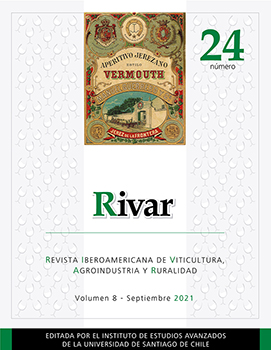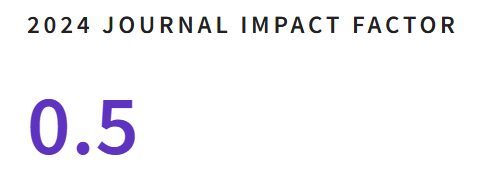The Avocado Cluster in Mexico. Sustained Growth from Production and Market Development
DOI:
https://doi.org/10.35588/rivar.v8i24.5165Keywords:
avocado cluster, business integration, competitiveness, economic spillover, market developmentAbstract
Since the nineties of the last century, the avocado cluster in the state of Michoacán, Mexico, has presented important transformations linked to the presence of new actors, foreign direct investment, promotion and marketing strategies, and safe production processes, consolidating itself as one of the most competitive agricultural products nationwide. The objective of this article is to analyze the emergence, development and economic impact of the avocado cluster. The methodology was based on the reprocessing of primary and secondary information, literature review, web pages of marketing companies and promoters of the product, interviews with key players in the industry, as well as several visits to the different avocado areas. For the statistical information, we used the data of the Mexican Agriculture Department, including agricultural censuses; reports from agricultural foundations; the Food and Agriculture Organization of the United Nations (FAO), and the State Board of Plant Health. Concluding that, after several generations, the producers became entrepreneurs, still maintaining their link and work with the field. Likewise, commercial opportunities have allowed a generalized economic spill in the region with social and environmental implications, outlining new lines of research.
Downloads
References
APEAM (2018). “Crece consumo per cápita de Aguacate Mexicano 700% en Estados Unidos”. En http://www.apeamac.com/wp-content/uploads/2019/10/29-SEP-WEB-05.jpg (consultado 15/09/2021).
APEAMAC (2020). “Avocados From Mexico”. En http://www.apeamac.com/avocados-from-mexico/ (consultado 15/09/2021).
Ayaviri, N.; Chucho, D.; Romero, M. y Quispe, GM. (2017). “Emprendimientos y clúster empresarial. Un estudio en la Provincia Chimborazo, Ecuador”. Revista Perspectivas 40: 41-64.
Bartra, A.; Cobo, R. y Paz, L. (2013). La hora del café dos siglos a muchas voces. Ciudad de México, Comisión Nacional para el Conocimiento y Uso de la Biodiversidad.
Bergh, B. y Ellstrand, N. (1986). “Taxonomy of the Avocado”. California Avocado Society Yearbook 70: 135-145.
Brenner, T. (2004). Local Industrial Clusters: Existence, Emergence and Evolution. Vol. 20. Londres, Routledge.
Cecatto, V. y Persson, LO. (2002). “Dynamics of Rural Areas: An Assessment of Clusters of Employment in Sweden”. Journal of Rural Studies 18: 49-63. DOI https://doi.org/10.1016/s0743-0167(01)00028-6
Chávez, A.; Sánchez, A. y Sánchez, G. (2010). Competitividad del Sistema Producto Agave Tequilero de Michoacán. Morelia, Fundación Produce Michoacán.
Chazarreta, AS. (2018). “Patrones recientes de las estructuras empresariales en la vitivinicultura mendocina”. Revista RIVAR 5(13): 117-140.
CNN (2017). “Oro Verde: el aguacate le deja más ganancias a México que los hidrocarburos”. CNN Español. En https://cnnespanol.cnn.com/2017/03/07/oro-verde-el-aguacate-le-deja-mas-ganancias-a-mexico-que-los-hidrocarburos/ (consultado 10/09/2021).
Dannenberg, P. y Kulke, E. (2005). “The Importance of Agrarian Clusters for Rural Areas-Results of Case Studies in Eastern Germany and Western Poland”. Erde 136(3): 291-308.
de la Tejera, B.; Santos, O.; Santamaría, H.; Gómez, T. y Olivares, C. (2013). “El oro verde de Michoacán: ¿un crecimiento sin fronteras? Acercamiento a la problemática y retos del sector agropecuario para el Estado y la sociedad”. Economía y Sociedad XVII(29): 15-40.
Delgado, M.; Porter, ME. y Stern, S. (2014). “Clusters, Convergence, and Economic Performance”. Research Policy 43(10): 1785-1799. DOI https://doi.org/10.1016/j.respol.2014.05.007
____. (2010). “Clusters and Entrepreneurship”. Journal of Economic Geography 10(4): 495-518. DOI https://doi.org/10.1093/jeg/lbq010
FAO (2020). Food and Agriculture Organization of the United Nations. En http://www.fao.org/faostat (consultado 15/08/2021).
Fundación Produce Michoacán (2005). Censo de Productores en Michoacán. Morelia, Fundación Produce Michoacán.
Gómez, N. (2009). Diversidad de los Hongos Micorrízicos Arbusculares asociados a plantas de aguacate (Persea americana Mill.), en un agroecosistema del Estado de Michoacán. Tesis de meaestría. Morelia, Universidad Michoacana de San Nicolás de Hidalgo.
Kulke, E. (2008). “Agrarian Clusters and Chains in Rural Areas of Germany and Poland”. En Le Heron, R. y Stringer, C. Agri-Food Commodity Chains and Globalizing Networks. Londres, Routledge.
Latorre, A.; del RincoÌn, D. y Arnal, J. (2003). Bases metodoloÌgicas de la investigacioÌn educativa. Barcelona, Experiencia.
Liu, M. y Samal, A. (2002). “A Fuzzy Clustering Approach to Delineate Agroecozones”. Ecological Modelling 149(3): 215-228. DOI https://doi.org/10.1016/s0304-3800(01)00446-x
Loria, K. (2017). “Mexican Avocado Promotions Spanning the US and Canada”. Produce Business. En http://www.producebusiness.com/MEXICAN-AVOCADO-PROMOTIONS-2/ (consultado 15/09/2021).
Maldonado, MM. (2009). “Integración de la ruta del vino en Querétaro, un producto innovador”. Quivera 11(2): 97-109.
Marshall, A. (1920). Principles of Economics. 8va. edición. Londres, Macmillan.
Phillips, PW.; Karwandy, J.; Webb, G. y Ryan, CD. (2015). “Innovation in Agri-Food Clusters - Mini Review”. CAB Reviews 10: 1-4.
Porter, ME. (2007). Clusters and Economic Policy: Aligning Public Policy with the New Economics of Competition. Boston, Harvard Business School, Institute for Strategy and Competitiveness y ISC White Paper XI.
____. (1998). “Clusters and the New Economics of Competition”. Harvard Business Review 76(6): 77-90.
____. (1990). The Competitive Advantage of Nations. Nueva York, The Free Press.
Romero, M. (1877). “El Café de Uruapan”. El Regenerador. Año I, N° 46. Morelia, 5 de junio de 1877.
SaÌnchez, PJ. (1999). “Manejo postcosecha del aguacate”. BoletiÌn de la Asociación Agrícola Local de Productores de Aguacate de Uruapan 4.
Sánchez, RG. (2007). El Clúster del Aguacate de Michoacán. Desarrollo Regional para el Liderazgo Global. Morelia, Fundación Produce Michoacán.
Sánchez, SD. (2006). Breve historia del café en Michoacán. Morelia, Universidad Michoacana de San Nicolás de Hidalgo.
Salazar, S.; Zamora, L. y Vega, RJ. (2005). “Update on the avocado industry of Michoacán, México”. California Avocado Society Yearbook 87: 31-44.
SIAP (2020). Agricultura. Ciudad de México, Servicio de Información Agroalimentaria y Pesquera SIAP SAGARPA. En https://www.gob.mx/siap (consultado 20/08/2021).
Starobinsky, G.; Gonzalo, M.; Filipetto, S. y D’Alessandro, M. (2020). “Dinámica de mercados y esfuerzos tecnológicos en un sistema de innovación periférico: La Riojana Cooperativa Vitivinifrutícola”. Revista RIVAR 7(20): 67-87. DOI https://doi.org/10.35588/rivar.v7i20.4477
Storey, WB.; Bergh, GA. y Zentmyer. G. (1986). “The Origin, Indigenous Range and Dissemination of the Avocado”. California Avocado Society Yearbook 70: 127-143.
Torres, AM. y Bergh, BO. (1980). “Fruit and Leaf Isoenzymes as Genetic Markers in Avocado”. J. Amer. Soc. Hort. Sci. 116: 1078-1081.
Villafán, K.; Guitrón, M.; Pedraza, O. y Bonales, J. (2007). “Cluster aguacatero en el Estado de Michoacán, México”. En Actas VI Congreso Mundial del Aguacate. Viña del Mar, 12 al 16 de noviembre 2007.
Villanueva, T. y Zepeda, A. (2018). “La producción de aguacate en el Estado de Michoacán y sus efectos en los índices de pobreza, en el cambio del uso del suelo y la migración”. Revista mexicana sobre desarrollo local 1(2).
Zheliazkov, G.; Zaimova, D.; Genchev, E. y Toneva, K. (2015). “Cluster Development in Rural Areas”. Ekonomika poljoprivrede 621(1): 73-93. DOI https://doi.org/10.5937/ekopolj1501073z









